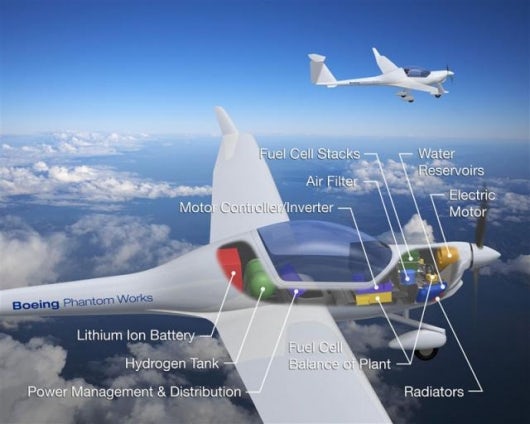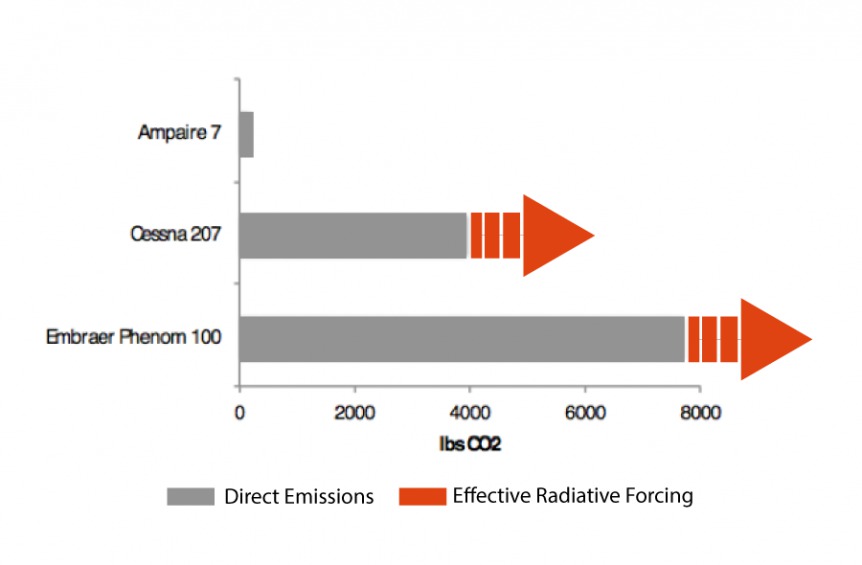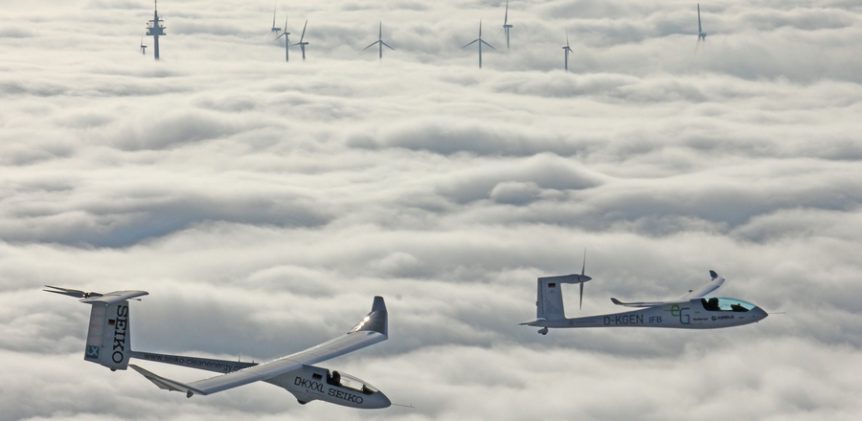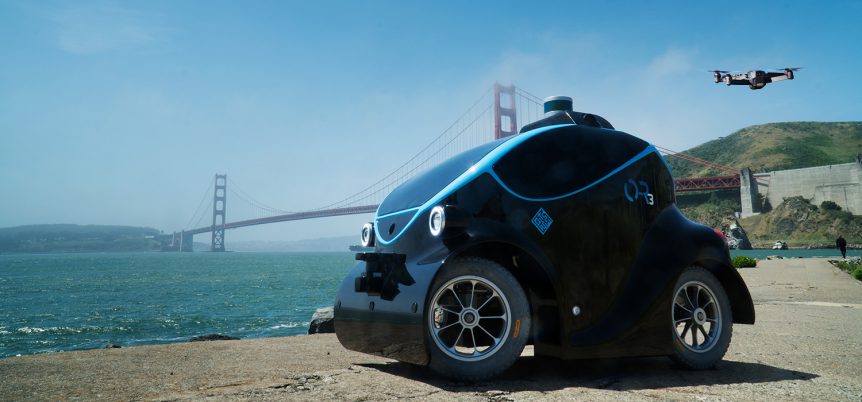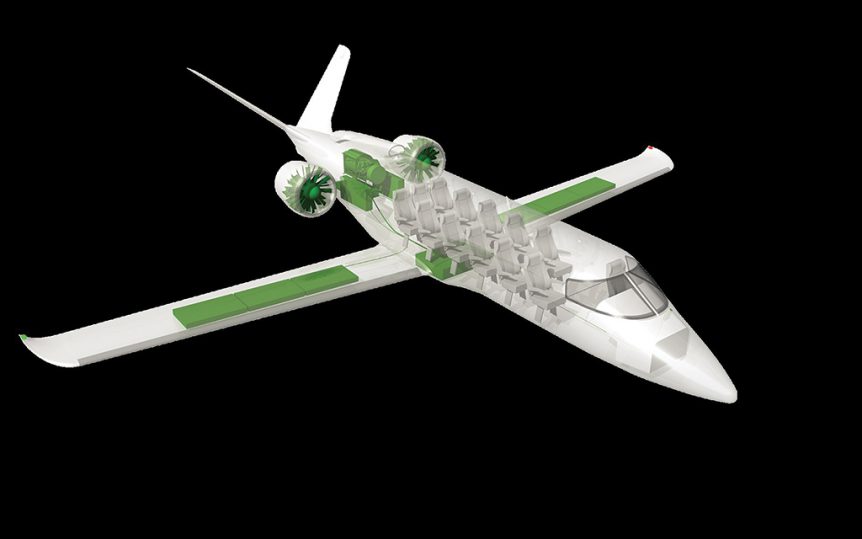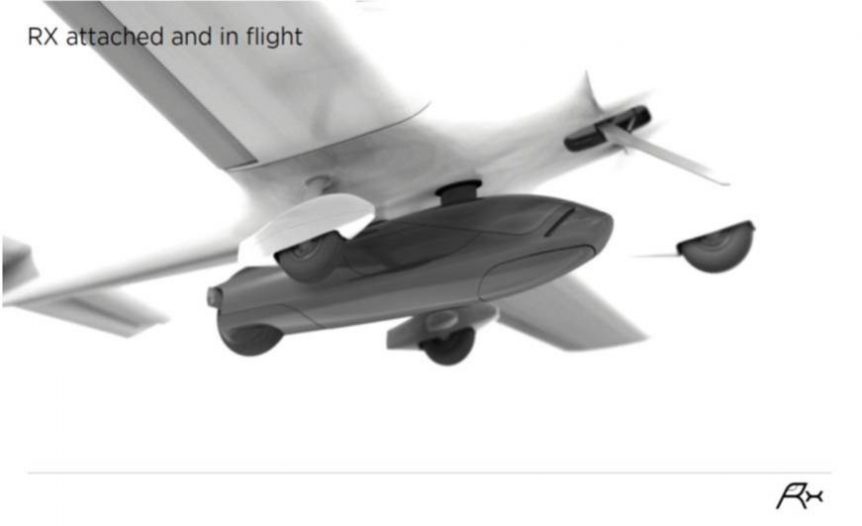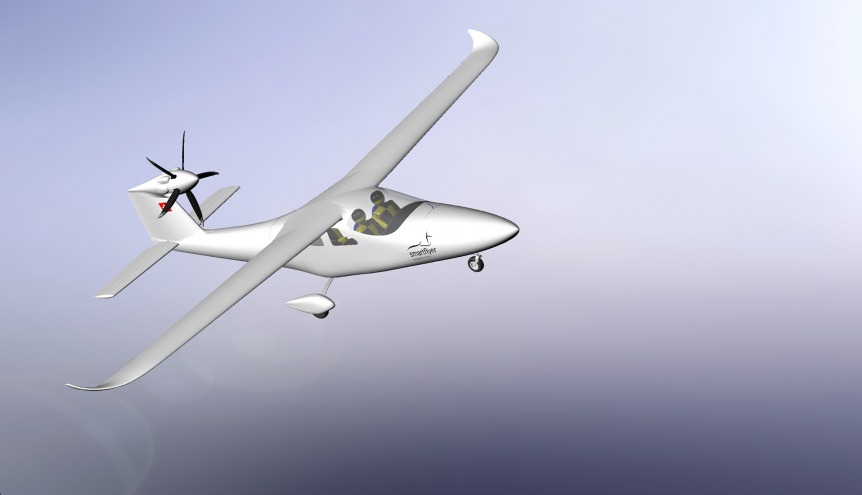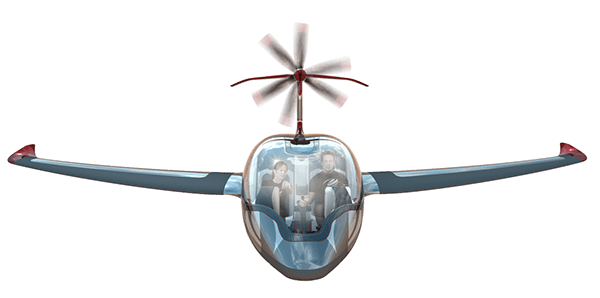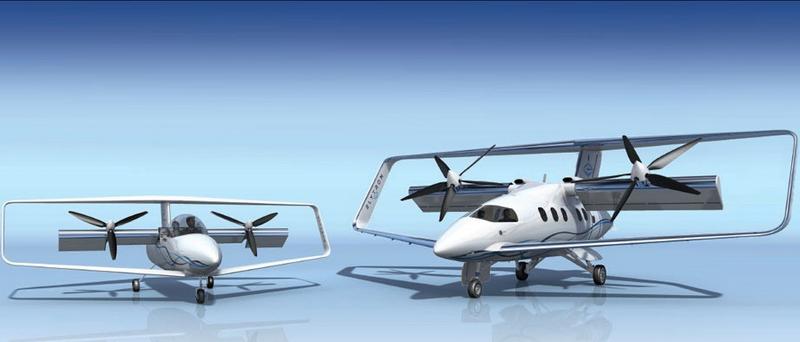Mike Friend spent 36 years with Boeing, rising to positions as Chief Engineer and Technology Director. His technical and linguistics abilities helped make him a world traveler, creating the first fuel-cell powered airplane in Spain, for instance, in 2002 through 2008, when the demonstrator craft first flew. That was the first of many hybrid designs Mike would work on, with samples of his work on display this month in Beijing. At the E-Flight Forum, sponsored by Siemens, he held forth on single-, two-, and five-seat configurations that could benefit from hybrid power. His talk, “Hybrid electric aircraft concepts, and a rational approach to success,” explained his reasoning for being enthusiastic about hybrids and showed different ways hybrid technology could be applied to different missions. He points out that even though batteries have gone past the “tipping point” for practicality, they are heavy. What is not of concern on a bus is a major problem in a light airplane. (The talk …
Ampaire and its Zero Emission Airplane
Ampaire, a California-based startup, has a simple, two-fold set of goals. Its TailWind™ aircraft will solve the problems of high operating costs for short-haul airlines and reduce emissions by 99 percent. They must make a compelling argument since they won one of ten awards at the recent the 2017 Hello Tomorrow Global Summit Deep Tech Challenge in Paris. Kevin Noertke, CEO of the firm, presented a brief but energetic rundown on the company’s goals and the elegant aeronautical offering he and co-founders Cory Combs (CTO) and Ryan Bilton (CFO) envision. Note the crowd, the band, and the high production values of the Summit. Your editor wondered about the “Powered By” reference to Airbus. Kevin cleared that up in an email. “The ‘Powered by’ statement is a phrasing Hello Tomorrow uses to describe where their sponsorship funding came from. “For example: “ONE €100K GRAND PRIZE: For the best early-stage startup – Equity-free, no strings attached – Powered by BNP Paribas …
e-Genius Gets Around Quickly, Inspires Others
Birds of the Same Tail Feather Configuration Prof. Dipl.-Ing. Rudolf Voit-Nitschmann (emeritus) had a lot to do with designing the 1996 Icare II solar-powered sailplane and the 2011 e-Genius. Icare II set several world records in its 20 years, most under the guidance of pilot Klaus Ohlmann. e-Genius won the award for being the quietest airplane at the Green Flight Challenge held in Santa Rosa, California, and was a close second to Pipistrel’s G4 in passenger miles per gallon (equivalent) energy use. Dipl.-Ing. Voit-Nitschmann was kind enough to explain to your editor how the propeller center came to be at the top of the tail on e-Genius. It’s a similar configuration to that on the Icare II*, and one he had found to provide the greatest undisturbed air to the propeller and the least added friction drag, since only the lower part of the blade crossed in front of the upper part of the vertical fin and rudder. This configuration …
Hoversurf and OTSAW Patrol the Skies of Dubai
Hoversurf’s recent announcement of its use by Dubai police to patrol the streets and skies of the capital city brings forth several questions. With Dubai and other Emirates readily encouraging new modes of transport, including sky taxis and possibly Hyperloop trains, the country seems set to lead a transportation revolution in the 21st century. Already, style leaders and plutocrats crowd the streets with Lamborghinis and Bugattis: the police force fielding equally formidable patrol vehicles to control over-eager drivers. Police inventories include a Brabus-tuned 690 horsepower Mercedes Geländewagen capable of off-road desert sorties, and at least one $1.6 million Bugatti Veyron for on-road speeders, along with a Porsche 918 and various Aston Martins. Several other supercars ensure a fairly even pursuit against Dubai’s party crowd if necessary. Not so fast and furious after October 15, speed limits on Sheikh Mohammed bin Zayed Road (311) and Emirates Road (611) have been reduced to 110 kilometers per hour (68.2 mph) hardly sufficient to …
Boeing Announces Zunum Progress, Acquisition of Aurora Flight Sciences
Boeing made two announcements this week that show the maker of large aircraft willing to investigate niche markets at smaller scales and with more personal service for flyers. Both involve electric power and the potential for automated flight. Zunum To Fly by 2020, In Service by 2022 Zunum Aero, the Boeing- and Jet Blue-backed regional airliner startup, will begin development of a 10-to-12 passenger airplane, hybrid powered with large electric ducted fans at the rear of the fuselage. Having flown on earlier examples of 10-passenger “airliners,” your editor welcomes this smaller package. Ford Trimotors and DeHavilland Dragons carried passengers in the 1930s, with simple accommodations and window seats for all. The single-aisle made boarding and deplaning easy and quick, and the low altitudes and slow speeds gave a great sense of engagement with the passing scene. Zunum provides a modern adaptation of this personalized service and opens many otherwise underused airports for new use. It brings back the regional airport …
A Range Extender You Can Ride Home
Range extenders make any airplane to which they are attached a hybrid aircraft, with an engine-driven generator charging batteries or driving one or more electric motors that provide thrust. Speaking today at the 7th EASN International Conference on Innovation in European Aeronautics Research, Richard Glassock, a Fellow at the Institute of Aerospace Technology at the University of Nottingham, gave the range extender a completely new mission. His innovation comes in two versions, the RExLite and RExMoto. RExLite is a simple generator drive that mounts under the aircraft. RExMoto looks similar – a streamlined pod under the aircraft – but can be converted to a motorcycle when on the ground. Both “use conventionally-fueled combustion-engine-driven electrical generators to provide energy at peak efficiency and minimum emissions, effectively converting the All-Electric to a Hybrid Electric aircraft.” RExLite Range Extender RExLite manages to contain a 40 kilowatt (53.6 hp.) engine-generator in the 60 kilogram (132 pound – depending on fuel load) pod. According to …
Zeppelins, Blimps and Plimps
How about exploring a softer, gentler form of flight? Certainly, gas-filled envelopes provide a large way to transport goods and people, but for a variety of reasons, have fallen out of favor in recent years. Several entrepreneurs are trying to revive an old idea. Hanging Over Our Heads One threat hanging over our heads is that of plummeting drones, either having exhausted their short-range batteries or banging up against a tall building. The infamous video of a drone falling onto a woman in Seattle has been removed from YouTube, probably for legal reasons, but an abundance of others are there for your viewing pleasure. Maybe More Truth than Poetry Alfred Lord Tennyson wrote a prescient bit of poetry in 1835, envisioning future flight into an age where Amazon might be using electric blimps to deliver necessities and frivolities worldwide. For I dipt into the future, far as human eye could see, Saw the Vision of the world, and all the …
SmartFlyer Challenge: Electric Airplanes Fill Swiss Skies
There are few times one will see more than one electric airplane at the same place – outside of perhaps, Friedrichshafen’s e-Flight Expo every year. But to see them flying at the same field on the same day is an even grander delight. That happened September 9 and 10 at Grenchen, Switzerland. Grenchen hosted the world’s first all-electric fly-in – the SmartFlyer Challenge. It drew an appreciable number of electric aircraft of all sizes and types despite the clouds and rain that kept some from scaling the mountains. An Electric Three-Plane Formation Flight The Siemens-powered Magnus e-Fusion from the Czech Republic, the electric Phoenix motorglider, and Stuttgart University’s e-Genius all flew formation with a Piper L-4, a World War Two liaison aircraft and camera plane. They joined a commendable group of aircraft on the field. All seemed to fly as much as possible during the event, including drag racing a Tesla S sedan down the runway. Expatica.com noted, “Pilot Frank …
Equator P2 Makes First Taxi Test
Designing and building your own airplane is a chore most people will never accomplish. It’s harder than it looks. All the people your editor knows who have accomplished this, even “just” the building part, talk about the 90-percent rule: 90-percent done – 90-percent to go. Getting the Nose Gear to Steer Tomas Brodreskift of Equator Aircraft is probably at the 95-percent stage of aircraft completion on his hybrid P2 amphibian, but he and his team still need to drill new holes, make new fittings, laminate some additional pieces and finally get a nose-gear steering system in place. Since his airplane doesn’t have a set of rudder pedals, steering is controlled by pushing on switches on an orange handgrip in the cockpit. Motor Run Number 2 Since it last ran in April before being transported to the Friedrichshafen Aero Expo, the Equator P2 has waited for its nose gear and “steer-by-wire” controls, among other things, to enable it to make its …
Elytron Changes Names, Forms, Becomes Converticopter
Oliver Garrow has been pursuing the dream of vertical takeoff and landing (VTOL) flight for a decade, starting long before it became the currently fashionable ideal for “flying car” enthusiasts. He sold a little over 1,000 simulation packages to enthusiasts, who could “fly” variants of the Verticopter™ ranging from three to 65 feet in span. At the same time in 2010, Garrow was testing large radio-controlled models of the concept at NASA Ames, Moffett Field, California. The craft’s configuration changed considerably as Oliver refined his concept, with a full-scale prototype displayed at the HAI (Helicopter Association International) Helicopter Expo in Orlando, Florida in 2015. The company and vehicle names changed to VTOL Aerospace and Converticopter™. Later, Garrow’s team tested the static thrust of the prototype, achieving close to 1,000 pounds of thrust at about 1/3 throttle on the 450 shaft horsepower turbocharged engine. Here it’s shown in hover in 96-inch span model (CVC96) form earlier this year. The use of …

